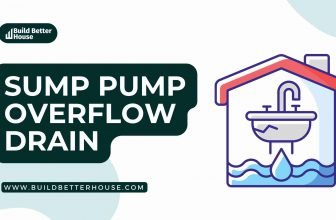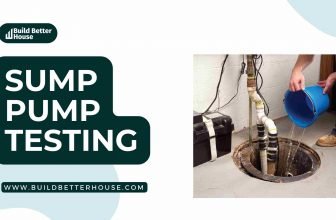How to Unfreeze Sump Pump Lines: Easy DIY Solution
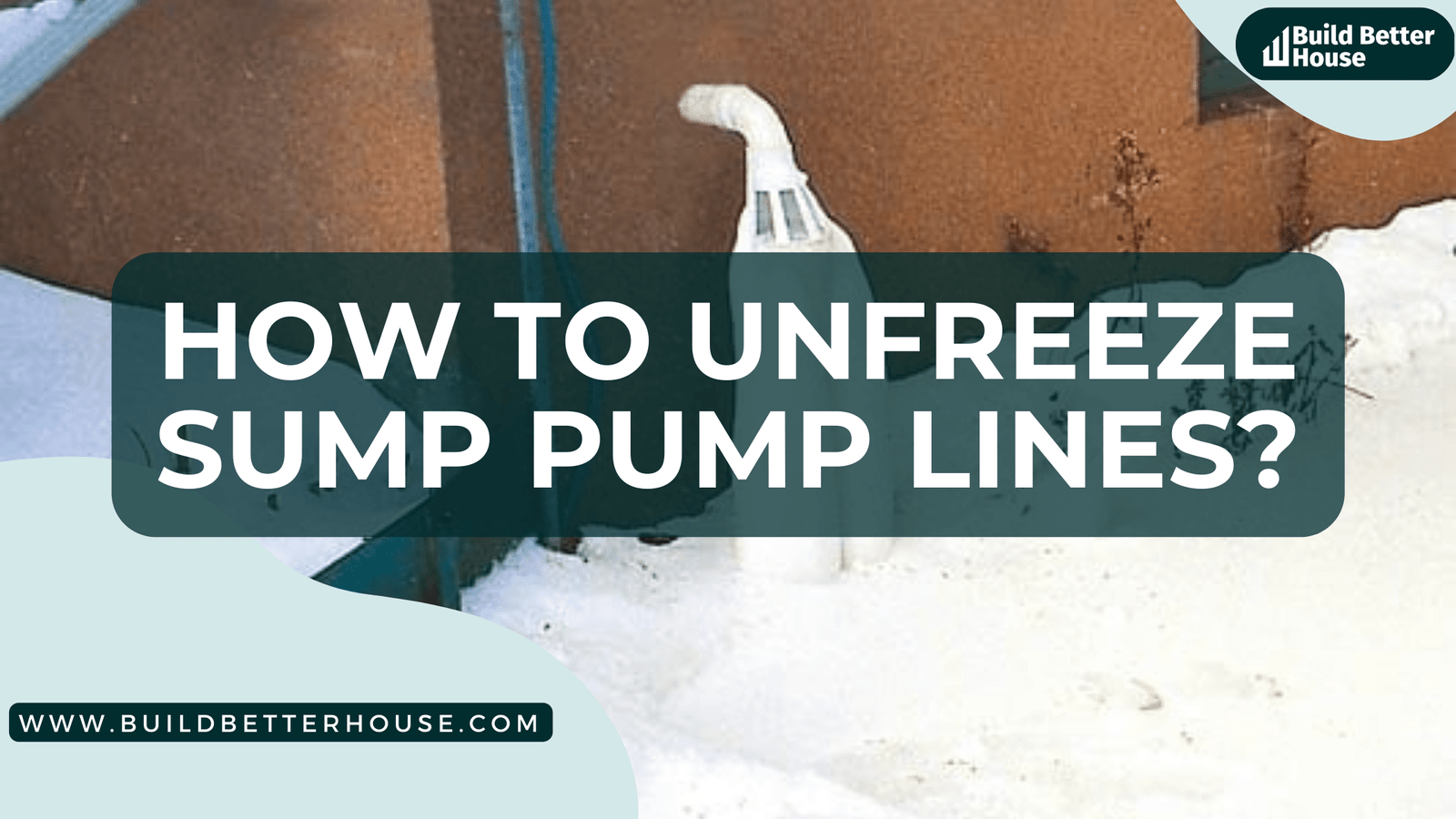
Wondering how to unfreeze sump pump lines? Are you tired of dealing with a sump pump line that keeps freezing up during the cold winter months?
Many homeowners face this problem; fortunately, DIY steps will tell you how to unfreeze sump pump lines and keep them functioning.
In this guide, I’ll present the best ways to unfreeze sump pump lines, from hot water to heat tape installation. So let’s discover how to unfreeze sump pump lines!
What Causes Sump Pump Lines to Freeze?
Before we dive into the solutions for unfreezing your sump pump line, it’s essential to understand what causes the problem.
The cold temperatures outside are the most common reason for a sump pump line to freeze. When the temperature lowers below freezing, the water in your sump pump line can freeze, causing a blockage.
This blockage prevents water from draining out of your basement, which can lead to flooding and water damage. The sump pump line may also freeze more frequently if installed incorrectly or too small.
Another common cause of sump pump line freezing is improper drainage. Water can collect in the line and freeze if your sump pump line is too long or sloped incorrectly.
Similarly, if your sump pump discharge point is too close to your home, the water can freeze before it can drain away from your foundation. This can cause ice buildup around your home’s foundation, leading to cracks and water damage.
Step-by-Step Guide to Unfreezing Your Sump Pump Line
Now that your tools and materials are ready, it’s time to know how to unfreeze sump pump lines.
Follow these steps for the most effective results:
Switch Off the power
Before working on the sump pump line, turn off the pump to avoid accidents. This will also prevent damage to your sump pump while working on the line.
Empty the pit: Remove any water from the sump pump line using a bucket or container once your sump pump is turned off. Be sure to dispose of the water properly to avoid damage to your basement.
Locate The Frozen Section
This is typically where the line exits your home and extends outside. Look for any visible signs of ice buildup or blockage.
Remove any snow or debris covering the frozen section of your sump pump line. This will allow you to access the line more quickly.
Pour Hot Water
Fill a bucket or basin with hot water. The water should be as hot as you can safely handle – around 120 degrees Fahrenheit is ideal.

Pour hot water slowly into the sump pump line, starting from the end closest to the pump. Be sure to pour the hot water slowly to avoid damaging the sump pump or the line. As the hot water flows through the line, it will thaw the ice and clear any blockages.
Also, pour the water over the frozen section of your sump pump line. Be sure to pour the water evenly, allowing it to soak into the ice and melt it away.
Use a Hairdryer or Heat Gun
Apply additional heat to the frozen section of your sump pump line using a hairdryer or heat gun. Hold the tool a few inches away from the line and move it back and forth to distribute the heat evenly. This will help to melt any remaining ice and prevent the line from refreezing.
Use Heat Tape (optional)
If the above steps don’t work, you may need to install heat tape.
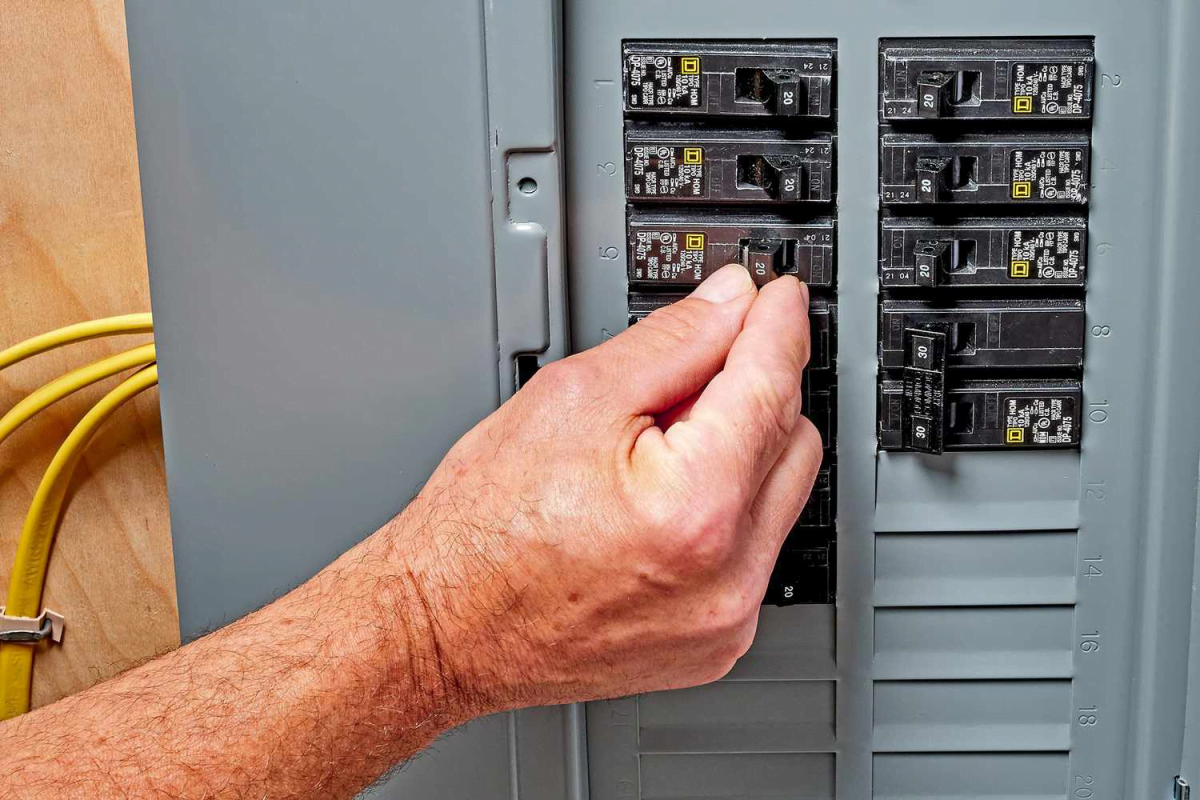
Heat tape is a type of electrical tape that generates heat and prevents pipes from freezing. Follow the manufacturer’s instructions to install the heat tape on the frozen section of your sump pump line.
Use a Vacuum
Once the sump pump line is thawed, use a vacuum to remove any remaining water from the line. This will prevent any future freezing and ensure that your sump pump functions properly.
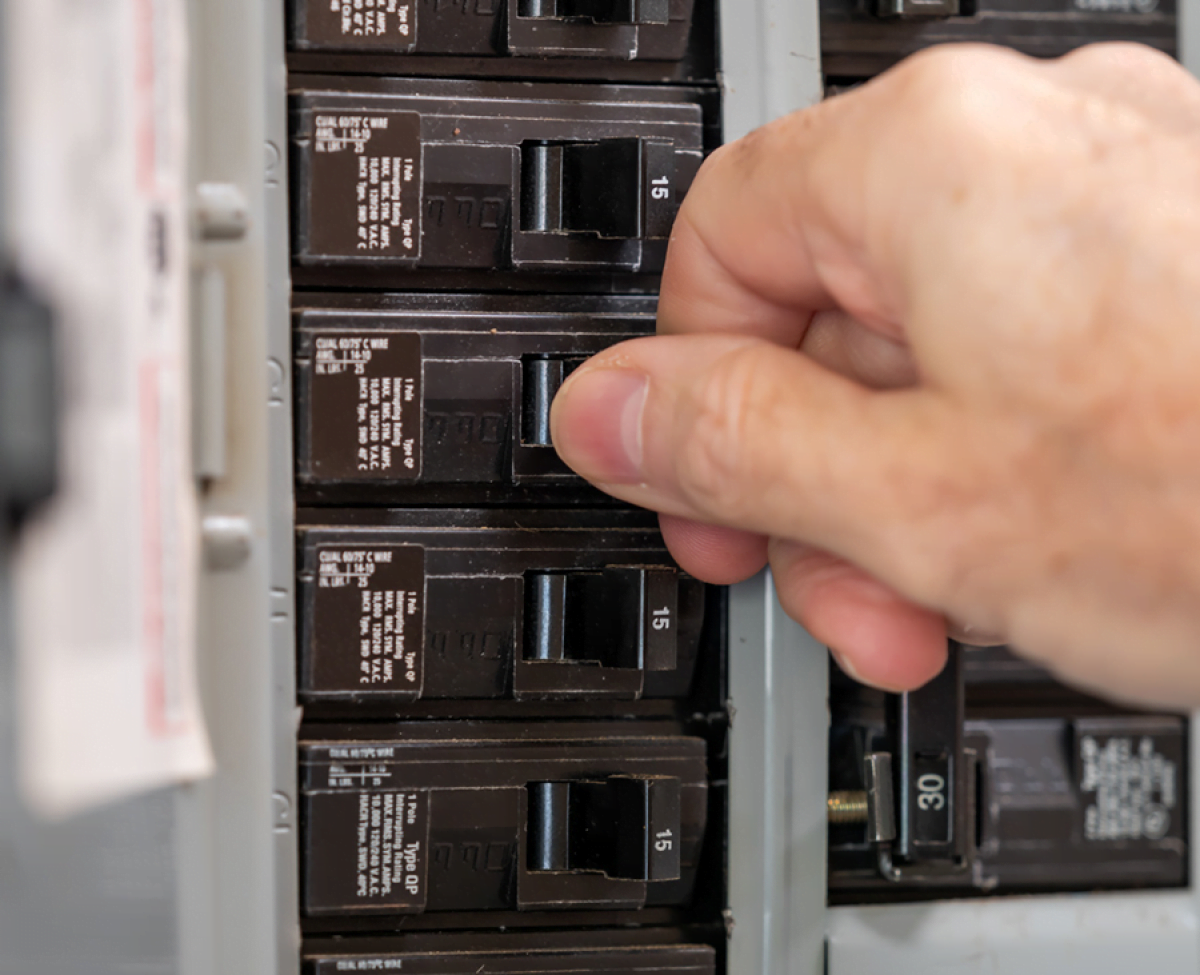
After using the vacuum, turn the power of your sump pump on and check the sump pit to ensure it is working correctly. Fill the pit with water, and make sure the pump removes it as it should.
Signs of a Frozen Sump Pump Line
One of the common signs that you have a frozen sump pump line is when water starts to back up in your basement.
This usually happens as the temperature drops below freezing and the water inside the sump pump line freezes, preventing the water from flowing out of the line. You may also notice that your sump pump is constantly running, but no water is being pumped out.
The line may be frozen if you hear the sump pump motor running but no water is pumped.
Another sign that your sump pump line is frozen is when you notice a foul smell from your basement.
This is due to the stagnant water that cannot drain from the sump pump line. In some cases, you may even see ice forming around the sump pump discharge pipe. If you notice any of these signs, it is likely that your sump pump line is frozen and needs to be unfrozen immediately.
Tips to Prevent Sump Pump Line Freezing in the Future
Now that you’ve unfrozen your sump pump line, it’s essential to take steps to prevent it from freezing again. Here are a few tips to remember.
Insulate Your Sump Pump Line
Insulating your sump pump line is one of the easiest ways to prevent it from freezing. This will help to keep the water in the line warm and prevent it from freezing. You can purchase specialized insulation sleeves for your sump pump line or wrap them in foam pipe insulation.
Slope Your Sump Pump Line Correctly
Another critical factor in preventing sump pump line freezing is to ensure that your sump pump line is sloped correctly. Ideally, your sump pump line should be sloped at least 1/4 inch per foot. This will allow water to flow freely and prevent it from collecting in the line and freezing.
Move Your Discharge Point
If your sump pump discharge point is too close to your home, the water may freeze before it can drain away from your foundation. Consider moving the discharge point further away from your home to prevent this.
Redirect the Discharge Pipe
Check local building codes and regulations before changing your sump pump system. If the pipe is in an unheated area, consider rerouting it to a warmer location. You can also extend the line so that it’s further away from the house, where it’s less likely to freeze.
By following these preventative measures, you can avoid the headache of dealing with a frozen sump pump line altogether.
Common Mistakes to Avoid When Unfreezing Sump Pump Line
While unfreezing a sump pump line may seem like an easy task, homeowners make a few common mistakes. Here are some to avoid:
- Using boiling water: While hot water is adequate for melting ice, boiling water can cause damage to the pipe. Stick to using hot water from the tap or a garden hose.
- Overheating the pipe: Applying too much heat to the line can cause it to melt or crack. Be careful not to overheat the pipe, and never use an open flame to thaw it.
- Not turning off the sump pump: Always turn off the pump before working on the discharge line to avoid accidents.
Now that you know how to unfreeze sump pump lines be sure to remember these tips to avoid any further mistakes.
Sump Pump Maintenance Tips
It’s crucial to do routine maintenance on your sump pump to keep it operating efficiently and avoid further thaw. Here are some tips to help you maintain your sump pump:
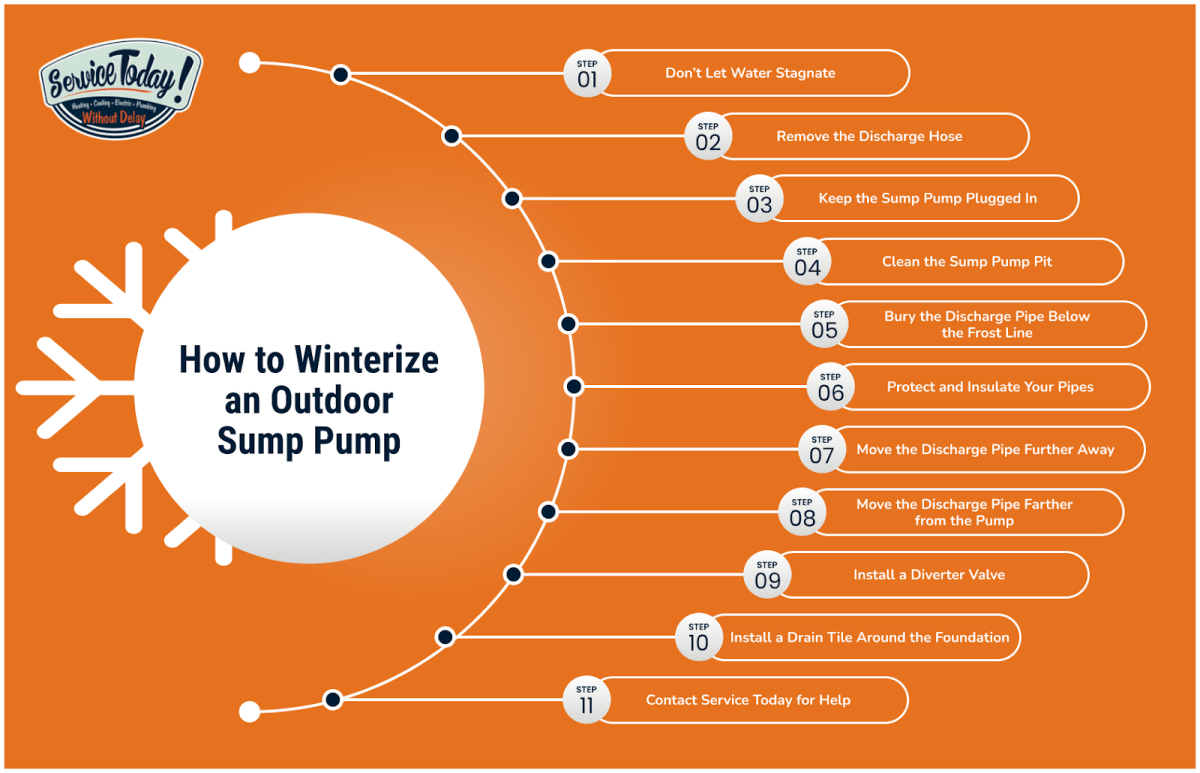
- Test the sump pump at least once a year to ensure it works properly.
- Remove debris or sediment from the sump pit and clean it frequently to prevent clogs.
- If your sump pump has a battery backup, make sure to replace the battery every 2-3 years.
- Check the discharge line regularly for any signs of damage or blockage.
Follow these maintenance tips also to ensure the efficient working of your system.
Similar Tutorials To Check Out!
- Sump Pump Dripping Noise? Causes & 4 Easy Ways To Stop It: Are you tired of hearing the sump pump dripping noise? This article will review the causes and easy ways to stop the sump pump dripping noise.
- Sump Pump Is Running But Not Draining? 6 Possible Reasons: Your sump pump is running but not draining? Fortunately, if your sump pump is running but not draining, you can easily identify the causes and take action appropriately. To sort things out clearly, here are a few causes you can address. Let’s divine in quickly!
- How To Properly Extend The Sump Pump Discharge Pipe?: Do you have a sump pump system in place but don’t know the correct way to extend the sump pump discharge pipe so that it can adequately move water away from your home? With this article, you can easily extend the sump pump discharge pipes and go over the details of how to do just that.
- How Many Sump Pumps Do I Need To Prevent Flooding?: Are you concerned about the threat of flooding in your house and wondering how many sump pumps I need to prevent floods? If you are wondering how many sump pumps you need, there is no need to stress because you can quickly find all the information you need in this article.
Conclusion: How to Unfreeze Sump Pump Lines?
A frozen sump pump line can be a frustrating and costly problem for homeowners. However, with the tips and tools outlined in this guide, I hope you are now aware of how to unfreeze sump pump lines and tips to prevent future freeze-ups.
You can avoid costly repairs and keep your basement dry all year round by taking the necessary steps to maintain your sump pump.
FAQs on How to Unfreeze Sump Pump Lines
1. How often should I check my sump pump line?
You should check your sump pump line at least once a year, preferably before the temperature drops.
2. Can I use salt to thaw out my sump pump line?
No, you should never use salt to thaw your sump pump line. Salt can damage the line and may cause other problems.
3. What should I do if my sump pump line freezes again?
If your sump pump line freezes again, it may indicate a more significant problem. You should contact a professional to inspect your sump pump and determine the underlying issue.
4. Can I prevent a sump pump line from freezing with a backup sump pump?
A backup sump pump can help to prevent basement flooding, but it won’t necessarily prevent a sump pump line freeze. Insulating the line and checking it regularly are still the best preventative measures.




